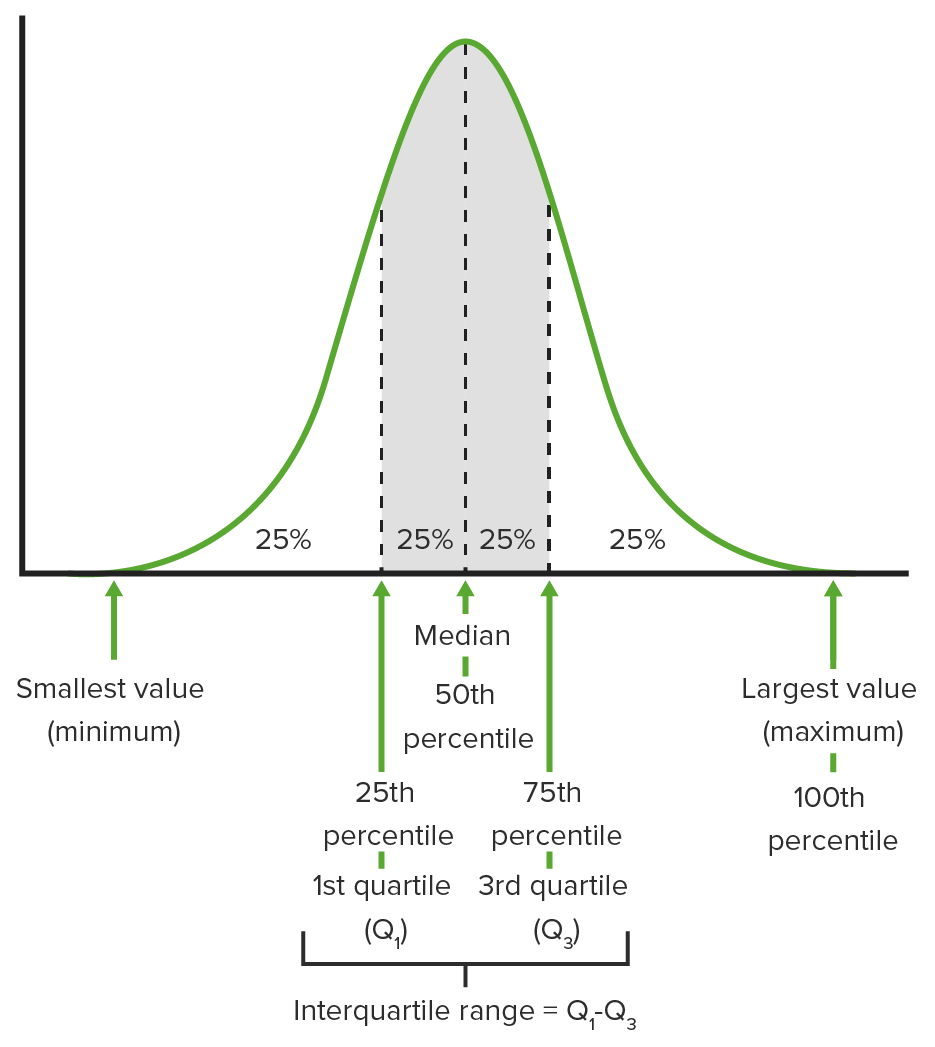Playlist
Show Playlist
Hide Playlist
Confidence Intervals – Statistics Basics
-
Slides 03 Statistics Epidemiology.pdf
-
Reference List Epidemiology and Biostatistics.pdf
-
Download Lecture Overview
00:00 alpha? Usually 0, sometimes 0.01. Now there is a different way to express statistical significance without using a P value, we call this a confidence interval. A confidence interval gives us a range in which your value probably has meaning or probably is reality. In science currently we prefer a confidence interval to a P value, you never report both of them, just one or the other. So when you're reading papers on a variety of epidemiological measures, you will find either P values or confidence intervals, never both, and again we prefer confidence intervals. This is how it works. A confidence interval contains a point estimate, that's the thing that we care about, the thing that we’re trying to measure. For example, the mean age of university students, 21 years, that's my computed average age, but it also gives me a range, an interval under which X percent of the time I'm going to find an answer in that range, what X percent? 95% usually. Where does that 95% come from? Well that's from my alpha level, remember 0, it's the same as 95. Don't worry about it too much, just remember that a confidence interval gives us a range of values in which the actual answer probably sits. Now there is a variety of statistical tests that you can use or you will come across in your science career. The T-test is a very famous and common test for comparing the means of different groups. Then we have a chi-square test, we use that to compare whether categorical variables are related or associated with each other. 01:39 The ANOVA or analysis of variance analysis, is kind of like a T-test with more than two groups, we can compare three or more groups to see if the mean values are the same or different. And correlations tell us whether or not continuous variables are related to one another, is height correlated with age, is weight correlated with height, is income correlated with age or lifespan, that sort of thing. And we have regressions. Regressions are enormously popular in epidemiology. In regressions we can determine whether or not certain variables have an influence on another important outcome variable.
About the Lecture
The lecture Confidence Intervals – Statistics Basics by Raywat Deonandan, PhD is from the course Statistics: Basics.
Included Quiz Questions
What statistical test would you use to determine whether the mean age of two groups of patients is the same or different?
- T-test
- Chi-square
- ANOVA
- Correlation
- Regression
What type of variable is required to perform a t-test?
- Continuous
- Categorical
- Dichotomous
- Interval
- Ratio
Which of the following tests is used to determine whether two categorical variables are associated?
- Chi-square
- T-test
- ANOVA
- Correlation
- Regression
Which of the following best describes the term confidence interval?
- A range in which a value is probably a reality.
- A range in which a value has no meaning.
- A specific number that has a meaning.
- The probability that rejecting the null hypothesis was done incorrectly,
- A value that lets one know the disease is more likely with a positive test result.
Customer reviews
5,0 of 5 stars
| 5 Stars |
|
1 |
| 4 Stars |
|
0 |
| 3 Stars |
|
0 |
| 2 Stars |
|
0 |
| 1 Star |
|
0 |
Nice and brief explanation of what confidence intervals are. Also the different tests are explained well.




